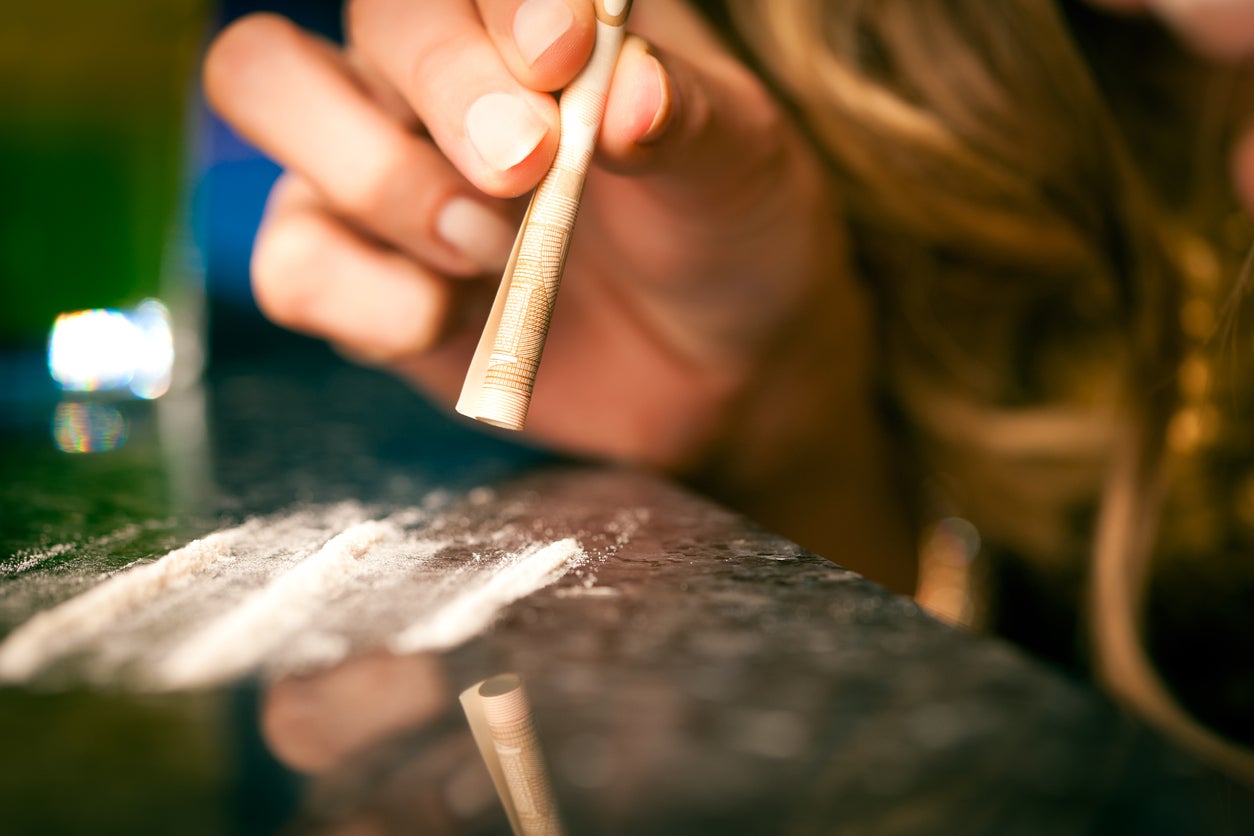We need to acknowledge the significant rise in women dealing cocaine and crack
One woman in every 10 men is prosecuted for drug-related crimes – this won’t have gone unnoticed by those further up the criminal chain, writes Ian Hamilton


If you’re a regular user of cocaine you won’t be surprised to know that more women are being convicted of supplying and dealing the drug. Despite female drug prosecutions falling between 2013 and 2019, those convicted for cocaine and crack have risen from 145 to 270 a rise of 80 per cent. This of course will represent just a fraction of those who were “unlucky” enough to have been caught and prosecuted.
A significant increase in female deaths relating to cocaine use, follows increased usage. Last year saw the highest number of female cocaine-related deaths on record, a rise of 26.5 per cent was recorded by the Office for National Statistics. These deaths were not spread equally as the report highlighted how drug-related deaths were concentrated in the most socially deprived communities.
Some clues as to why more women are dealing are contained in the Ministry of Justice report. Sixty-one per cent of female prisoners were in receipt of free school meals compared to only 17 per cent for those not in prison. Poverty has always been an effective recruiting sergeant into the drugs trade, as employment has become more precarious with the rise in zero-hour contracts it’s little wonder that the potential to make money from drugs has an appeal.
More broadly, cocaine use has been increasing year on year. Purity has risen but prices remain stable, meaning the drug is more affordable than it was a decade ago. Although proportionately more men than women use cocaine, use has increased for both sexes. This rise might account for the increase in female dealers as exposure to the drug will, unfortunately, create a dependency that can be difficult to finance, so dealing might be the only option some women have to feed their habit.
Prosecutions for drugs crimes continue to be dominated by men, with roughly 10 men prosecuted for every female. Something that won’t have gone unnoticed by those further up the drug distribution chain. Using this intelligence could be a reason for the increasing number of females who are dealing drugs, if the police have a sexist bias towards assuming men are dealers this clearly helps females.
The supply and distribution of crack and cocaine have traditionally been distinct but there are signs this could be changing. Some county line operations where drugs like crack and heroin are moved from urban areas to more rural settings are also moving cocaine. As official agencies step up attempts to interrupt these county line networks, those organising county lines will adapt. One way of avoiding detection is to increase the number of female runners. This would be potentially effective prior to the pandemic but could prove even more so when restrictions on movement due to coronavirus are in play. We already know that some canny low-level dealers adopted key worker uniforms at the start of restrictions to avoid attracting attention to themselves as they operated.
The Home Office is at pains to point out that its drug policy is not just about enforcement but ensuring there is adequate treatment for those who need it. At the same time, successive chancellors have approved significant budget cuts to specialist treatment. This isn’t about cutting some administrative fat from these mainly third sector providers, the intention is clear, shrink the drug treatment sector, after all, who will complain?
Men seeking treatment will find it hard, but for those women who need help the odds are stacked against them. Treatment can be off-putting, it is dominated by men so can be a difficult environment to enter, even virtually. Women who have problems with drugs are also disproportionately affected by intimate partner violence, drug treatment is populated by perpetrators, not exactly a good match.
Relatively few treatment centres offer women-only sessions or spaces or consider the need for childcare. I suspect many would like to offer female-centric services but decreasing budgets have halted any ambition they have to provide them.
The rise in female drug dealing is accompanied by other rises, the worst is the record numbers of females dying prematurely due to drugs. From the point women start using drugs to the point where some go onto die as a result of government policy appears blind to the female journey. It’s tempting to blame and single out government bias as the culprit but unfortunately, they merely represent wider societal views that continue to perceive drug use and any problems that develop as a man’s domain.
* Dr Rebecca Tidy helped provide data analysis for this opinion piece.




Join our commenting forum
Join thought-provoking conversations, follow other Independent readers and see their replies
Comments